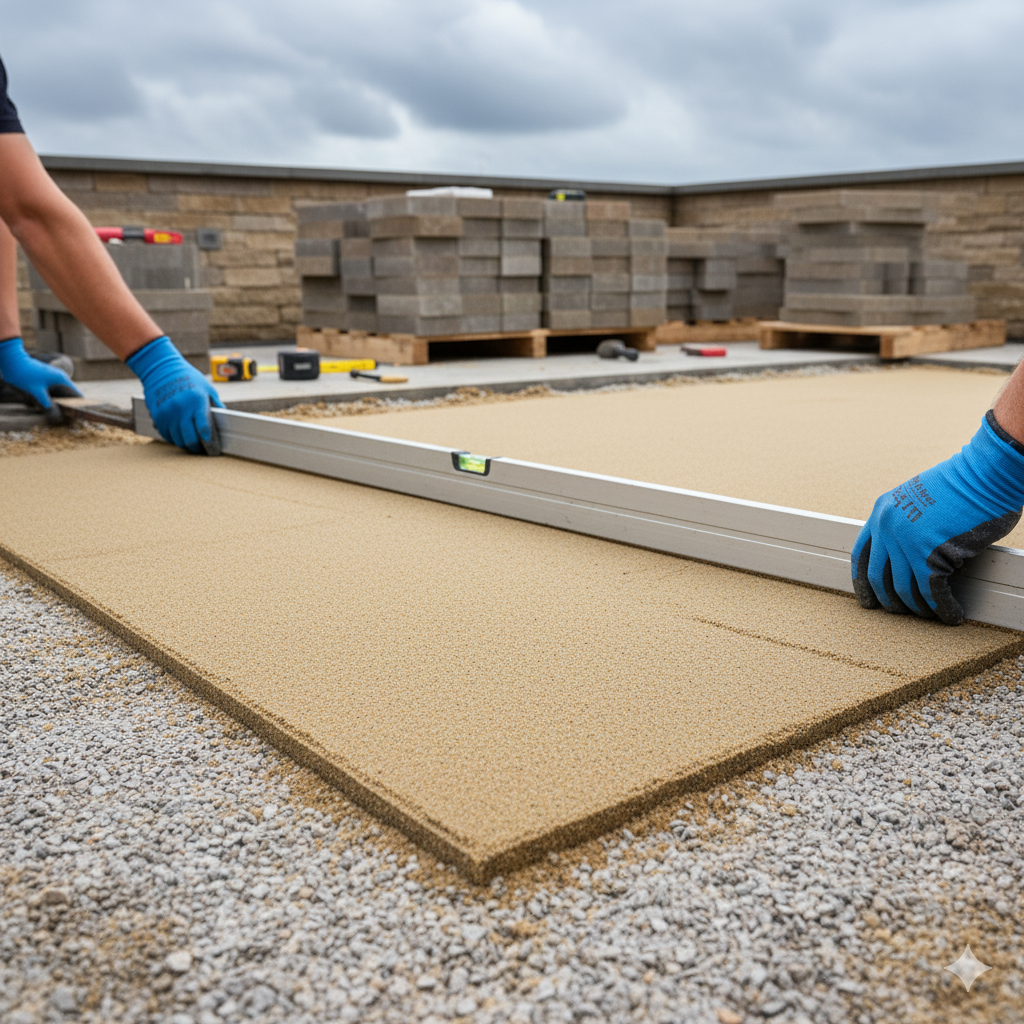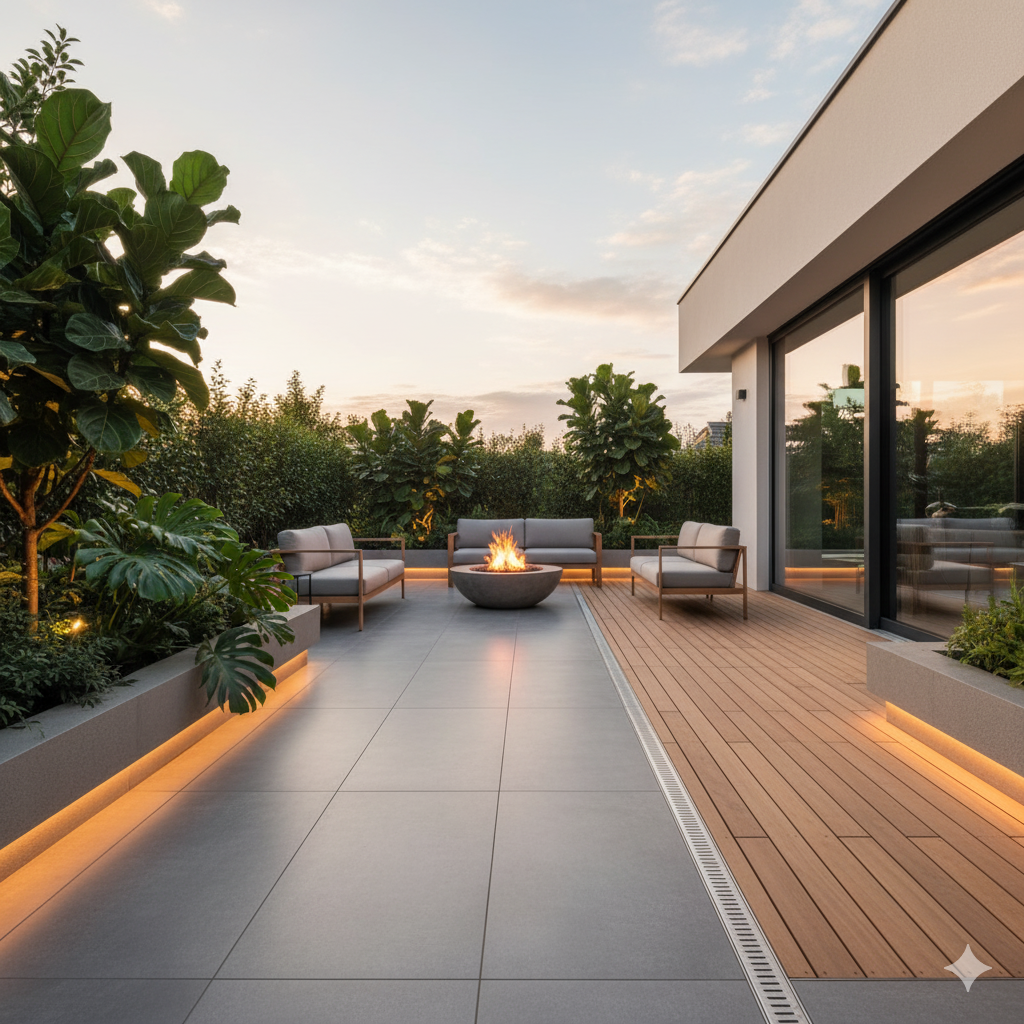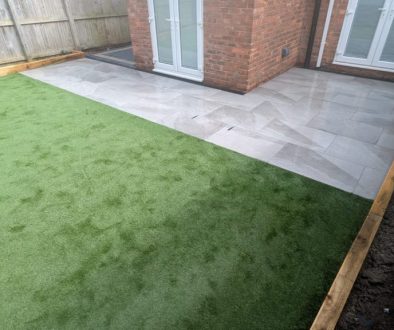Patio Drainage Mistakes That Cost Homeowners Thousands
A patio should be a place of comfort, style, and functionality—not a source of water damage or costly repairs. Yet, poor drainage remains one of the most common and expensive mistakes homeowners make when installing or upgrading their patio.
In the North East, where rainfall is frequent and winters can be harsh, drainage isn’t just an afterthought—it’s a structural necessity. Without proper water management, even the most beautifully designed patio can quickly develop cracks, damp patches, or subsidence. Understanding how drainage mistakes happen—and how to prevent them—can save you thousands in future repairs.
Why Drainage Matters More Than You Think
Good drainage is the foundation of a long-lasting patio. When water fails to drain properly, it collects beneath or around the surface, weakening the base and creating uneven areas. Over time, this leads to problems like lifting pavers, weed growth, and slippery algae build-up.
Standing water also accelerates frost damage during the colder months. When moisture seeps into joints or gaps and freezes, it expands, causing cracks in paving and shifting in the sub-base. For homes in the North East, where freeze-thaw cycles are frequent, drainage design is critical to preserving both the look and structure of your outdoor space.
Mistake 1: Ignoring Surface Gradient
One of the most frequent errors in patio installation is neglecting proper slope or fall. Every patio surface should be laid with a slight gradient—usually around 1:60—so that rainwater naturally runs off toward a drain or lawn area.
If a patio is laid completely level or tilted toward the house, water will pool and eventually seep beneath the surface. This can damage the sub-base and cause rising damp against exterior walls. Correcting an improper gradient after installation often means relaying the entire patio—a costly and avoidable expense.
Professional installers calculate the fall before laying any materials, ensuring the patio directs water safely away from the property.
Mistake 2: Skipping a Proper Sub-Base
A solid foundation is essential for both stability and drainage. Homeowners sometimes try to cut costs by laying paving directly on soil or sand, but without a compacted sub-base of crushed stone (commonly MOT Type 1), water cannot drain effectively.
Over time, the ground beneath absorbs moisture unevenly, causing sinking, cracking, and puddling. A professional installation always includes a correctly compacted sub-base, followed by a sharp sand layer that allows minor movement and even water dispersion.
Proper preparation may not be visible once the patio is complete—but it’s the difference between a patio that lasts one winter or twenty.

Mistake 3: Poor Jointing or Grouting
Gaps between paving slabs or blocks might seem minor, but they’re crucial for drainage. Using the wrong jointing compound—or failing to seal gaps correctly—lets water and debris penetrate deep into the surface. Over time, this causes the sub-base to soften and shifts the paving.
For example:
- Cement-based grouts can crack if applied too thinly, leading to water ingress.
- Sand-only joints often wash away in heavy rain, creating space for weeds and erosion.
Modern resin-based jointing compounds or polymeric sands offer better durability and permeability, allowing water to pass through without compromising structure.
Mistake 4: Neglecting Drainage Channels
Even patios with the right slope can struggle during heavy rainfall if they lack adequate drainage outlets. Homeowners often forget to include channel drains or soakaways—especially in large or enclosed patios where water has nowhere to go.
A well-designed patio incorporates discreet drainage systems such as:
- Linear channel drains along the edges to capture surface run-off.
- Soakaways or gravel trenches that absorb excess water below ground.
- Permeable paving that naturally filters water through its surface.
In the North East, where rainfall can be unpredictable, these features prevent water from pooling and protect surrounding landscaping from erosion.
Mistake 5: Using the Wrong Materials
Not all patio materials handle moisture equally well. Porous natural stones like sandstone and limestone look beautiful but absorb water more readily than non-porous options such as porcelain or sealed concrete. Without proper sealing or a good drainage plan, porous materials can stain, discolour, and degrade over time.
Resin-bound and permeable block paving have grown in popularity for this reason—they allow rainwater to filter through the surface, reducing run-off and frost risk. Choosing materials that align with your local climate and patio design makes all the difference in long-term performance.
Mistake 6: Overlooking Kerbs and Edging
Kerbs and edging provide both definition and protection for patios, yet they’re often installed without considering how they affect water flow. Solid, raised edges can trap water on the surface if not properly aligned or gapped for drainage.
Professionally designed edging serves several purposes:
- Directs water away from the patio area.
- Prevents block or slab movement.
- Adds aesthetic framing that complements the overall design.
When paired with integrated drainage channels or permeable joints, well-installed edging enhances both form and function—keeping your patio dry, stable, and stylish.
Mistake 7: Forgetting Seasonal Maintenance
Even the best-designed patio needs basic care. Over autumn and winter, fallen leaves, moss, and debris can clog joints and drains, leading to pooling and staining. Homeowners who neglect seasonal cleaning often find themselves dealing with surface algae or frost damage come spring.
Regular maintenance should include:
- Sweeping or power washing debris every few weeks.
- Checking drainage channels and grates for blockages.
- Inspecting sealants and reapplying when necessary.
Simple, routine upkeep helps maintain proper drainage and preserves your patio’s visual appeal year after year.
How Design Trends in 2025 Influence Drainage Planning
As patios evolve into true outdoor living spaces, 2025 design trends are placing more emphasis on sustainability and functionality—both of which connect directly to proper drainage.
Sustainable materials like recycled pavers and permeable concrete are in demand, allowing water to filter naturally through the surface while reducing environmental impact. Multi-functional layouts, such as those featuring outdoor kitchens or fire pits, require smart drainage placement to prevent standing water in activity zones.
Other key trends influencing drainage include:
- Biophilic design, where water features and plant beds help absorb and redirect rainfall.
- Mixed materials, such as combining stone and wood, which demand careful water flow management to prevent rot or erosion.
- Smart outdoor technology, with automated irrigation systems that control moisture levels around paving.
Homeowners adopting these 2025 trends should plan drainage early in the design stage to ensure their new patio remains both beautiful and practical.

Professional Patio Installation Prevents Costly Errors
Patio drainage isn’t something that should be left to guesswork. Every site has unique conditions—soil type, gradient, and rainfall exposure—that determine the best approach. DIY installations often overlook these variables, resulting in hidden water traps or unstable sub-bases.
Professional installers assess your property’s slope, choose suitable materials, and integrate drainage solutions from the outset. The result is a patio that not only looks good but also performs flawlessly throughout the seasons.
At M&C Paving Northeast, expert teams use tried-and-tested installation methods and modern drainage systems designed for the North East climate. From surface preparation to final sealing, their process ensures long-term performance, even under constant rain or frost.
Protect Your Patio Investment
A patio is a significant investment—one that should enhance your home’s value and lifestyle, not drain your wallet through avoidable repairs. Poor drainage might not be visible at first, but it can silently undermine your entire installation.
Before you build or renovate, ensure drainage is a central part of your design plan. Choose sustainable materials, proper gradients, and professional installation to enjoy a durable, low-maintenance patio that lasts for decades.
Protect your patio and your home with expert installation from M&C Paving Northeast. Contact us today to arrange a free consultation and create a patio that stays beautiful and functional through every season.




